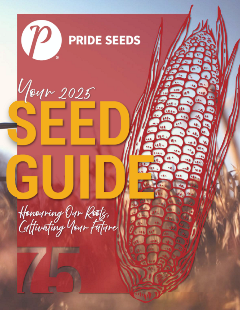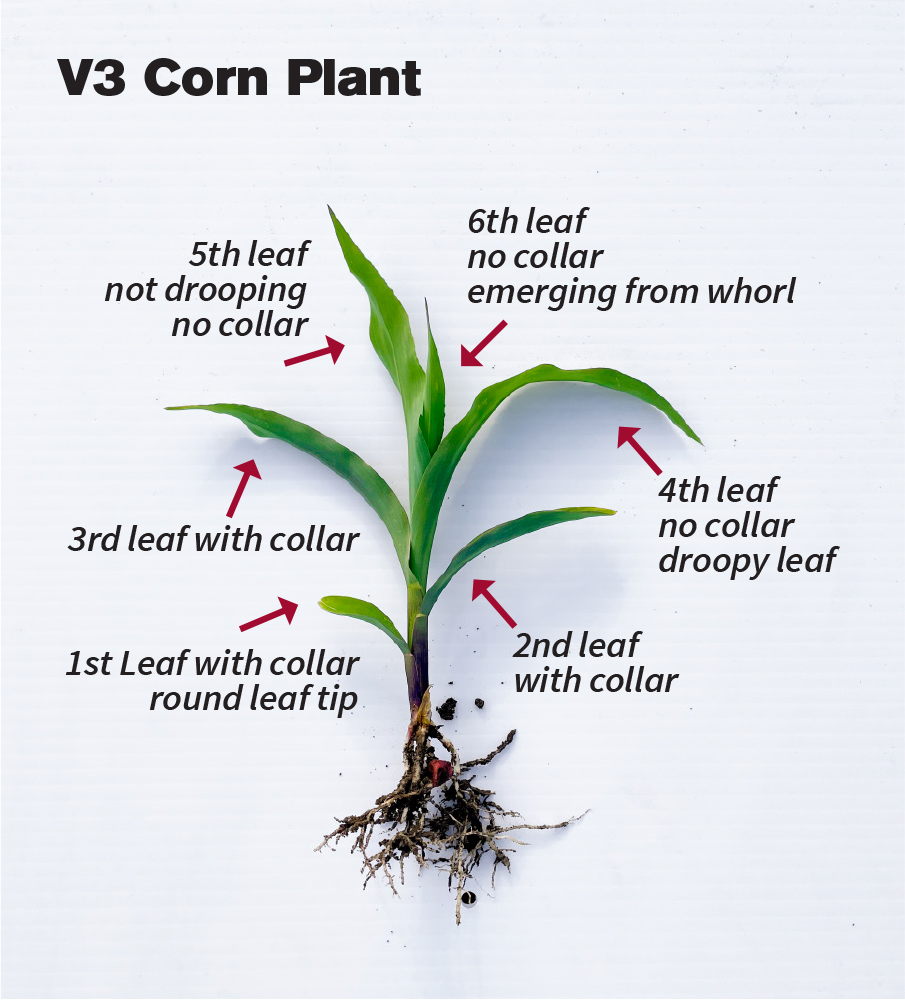___________________________________________________________________________________________________________________________________________

2024-2025 PRIDE Seeds Product GuideYou can find all of our products on the website, including supporting performance data and create your own personalized guide called My Guide. You can also download the digital version of our printed product guide which includes product comparison charts. |
Staging Corn Plants
Staging corn plants correctly is essential for understanding and assessing crop development. Your staging method will also affect when you make herbicide, fungicide, and fertility applications and recommendations. It is also important to know the difference between the methods as different companies use different methods to make application recommendations.
Before discussing the methods of staging corn, it is critical to mention that the first leaf will always have a rounded tip and this leaf needs to be included in the leaf count. As the plant grows and develops this first leaf may die, so be sure to add it to the final leaf count.
Staging Methods
Leaf Collar Method (V-Stage Method)
Counts the number of leaves present with a collar from bottom to top.
- A leaf collar is the lightly coloured band located at the base of an exposed leaf blade, close to where the leaf blade contacts the stem of the plant.
- Leaf stages are described in V stages; a plant with 4 collar leaves is in the V4 stage of development.
- (Vn; where n = number of leaves with collars;).
Leaf Over Method (“Droopy” Leaf Method)
Count all leaves that have arched over (leaf tip is pointing down)/ are drooping.
- Start counting at the bottom of the plant and move up.
- Using this method, not all leaves will be counted - the smallest leaves emerging from the whorl are not counted.
Leaf Tip Method
Count all the leaf tips from bottom to top of the plant.
- Young leaves that are emerging from the whorl are included in the count.
- Exercise caution when using the leaf tip method because different hybrids grow differently.
- For example, some hybrids are bred to have shorter internodes between leaves resulting in more leaf tips present before they flop and are fully functional leaves.
Corn Height Method
Measure from the soil surface to the highest point of the arch on the uppermost leaf with a tip pointing down.
- Note that the highest point on the plant is not being measured.
- This is not the most accurate method to stage corn because crop height can vary depending on environment and management conditions.
- This method is rarely used on its own, so you may come across this staging method paired with other staging methods in provincial Crop Protection Guides, product technology sheets and product labels.

Comparing Staging Methods
Leaf Staging Method
| Corn Height | Leaf Over | Leaf Tip | Leaf Collar (V-stages) |
| 5-6 cm | 2 | 3 | 1 (V1) |
| 9-17 cm | 4 | 5-6 | 3 (V3) |
| 18-33 cm | 6 | 7-8 | 4-5 (V4-V5) |
| 36-54 cm | 8 | 9-10 | 5-6 (V5-V6) |
Adapted from OMAFRA Publication 75, Guide to Weed Control.
THE PRIDE SEEDS ADVANTAGE
Farming is one of the most demanding industries in the world, subject to a variety of factors such as time, weather, and global pressures. You know this every time you look out the window and think about the field in front of you. Growers and dealers deserve an advantage: The PRIDE Seed Advantage.
LEARN MORETHE PRIDE SEEDS ADVANTAGE
Every year PRIDE Seeds works hard to produce leading-edge products that enable success where it matters most, on your farm. Our dedicated team strives to provide sales expertise, agronomy support, quality production, and service tailored to meet your needs.
LEARN MORE
-7.png?sfvrsn=87920db3_3)

Leave a commentOrder by
Newest on top Oldest on top